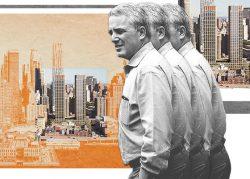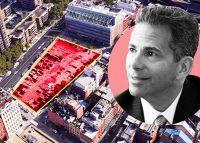Et tu, Gale?
For opponents of two towers proposed in the South Street Seaport Historic District, Manhattan Borough President Gale Brewer’s endorsement of the $1.4 billion project Tuesday must have seemed like a betrayal.
For fans of residential development, it was a promising sign that the controversial project will get the go-ahead — and that 2021 might be a turning point for builders.
Brewer has for ages sided against developers pitching outsize buildings, but she urged the Landmarks Preservation Commission to approve the Howard Hughes Corporation’s application for 250 Water Street.
She was among dozens of New Yorkers to testify at a hearing before the commission, which is charged with ensuring the appropriateness of architecture in historic districts.
Brewer’s backing was not only the most unexpected but arguably the most important, given her credibility as a steward of Manhattan’s traditional neighborhoods. For example, she is suing to reverse the de Blasio administration’s decision that four Two Bridges towers can be built without City Council sign-off.
Read more


What makes 250 Water Street different is that it would fund a $50 million endowment for the South Street Seaport Museum, which has struggled financially for years and been closed since March. Its champions call the institution crucial to the historic district, which they say justifies the Landmarks Preservation Commission taking the funding into consideration.
The project “will overall ensure this district’s success for many years to come,” Brewer told the commissioners via Zoom.
But the borough president cited another key argument for the residential development, which would be 470 feet at its highest point: “It has been crafted to reflect the existing urban context,” Brewer said.
To wit: At street level it would look like its neighbors, with the towers set back, and it would be at the Wall Street edge of the historic district. Backers say it would provide a transition from the low-scale buildings closer to the East River to the soaring spires just west of it.
“Y’all keep talking about a 40-story building as a tower,” testified Kenneth Jackson, the retired Columbia University professor and perhaps Manhattan’s premier historian, after a number of opponents had spoken. “Have you walked around Lower Manhattan at all?”
Robert Tierney, a former chairman of the commission, told his successors, “New buildings don’t need to be of the scale of 19th century buildings found on the other side of the district.” Howard Hughes’ edifices, he said, “would blend into the taller modern buildings immediately behind it.”
Critics, though, made an impassioned case for Landmarks to deny the application, rejecting the very idea of a transitional zone.
“There’s no such thing as an edge to a historic district,” said Tara Kelly of the Municipal Art Society. “You’re either in it or out of it.”
Andrea Goldwyn, director of public policy at the New York Landmarks Conservancy, was among many who said the towers would “overwhelm” the district. And Simeon Bankoff, executive director of the Historic Districts Council, called the proposed building “a truly monstrous edifice to achieve many goals, but chiefly greed.”
Hitting on another argument frequently made by project foes, Goldwyn said the landmarks agency is obligated to gauge only the historic appropriateness of the proposal. “A hefty donation should not influence the commission’s decision,” she said.
But it is hard to imagine commissioners completely divorcing themselves from that and other factors touted repeatedly Tuesday by a veritable who’s who of the city’s so-called permanent government. Many testifiers needed a good portion of their allotted three minutes just to rattle off their résumés.
The project’s role in saving the museum was a frequent refrain.
“It would endow us with enough continuing support so that we might never face closure again,” said Brendan Sexton, chairman of the museum’s board and a former city sanitation commissioner. “We have the chance for financial stability for the first time.”
Rebutting claims that development rights in the district could be sold to raise funds, as envisioned long ago, construction magnate Frank Sciame said, “For five decades, the benefits to the museum of the air rights have not materialized.”
He questioned why the parking lot on which the project would rise was included in the historic district in the first place, as nothing distinguishes the site. But in any case, Sciame, a board member and former chairman of the New York Landmarks Conservancy, said, “The residential towers above are sited and massed such that they will not detract from the historic district.”
With its size, proximity to Wall Street and striking views of the East River, the project’s 260 condominium units would command prices sufficient to accommodate 100 affordable rentals.
“Even though I know we’re not supposed to talk about this issue, it will have affordable housing,” Brewer told the commission, alluding to the agency’s narrow mandate.
Affordability would play a stronger role if the project gets past Landmarks and into the city’s land use review, where Council member Margaret Chin would decide its fate late this year. She testified in favor of landmarks approval Tuesday.
Seth Pinsky, an Economic Development Corporation president in the Bloomberg administration, doubted that a low-scale project would be financially viable at 250 Water Street. And even if it were, he testified, it would not be appropriate from an urban planning perspective to put a small building there, given its proximity to job centers and the Fulton Street and World Trade Center transit hubs.
Like other project supporters, Pinsky noted the need for economic development as New York City tries to come back from its pandemic state — ostensibly not Landmarks’ concern, but hard to ignore nonetheless.
“Take a hard look,” Pinsky said, “at what we will forego as a city if we deny this.”
